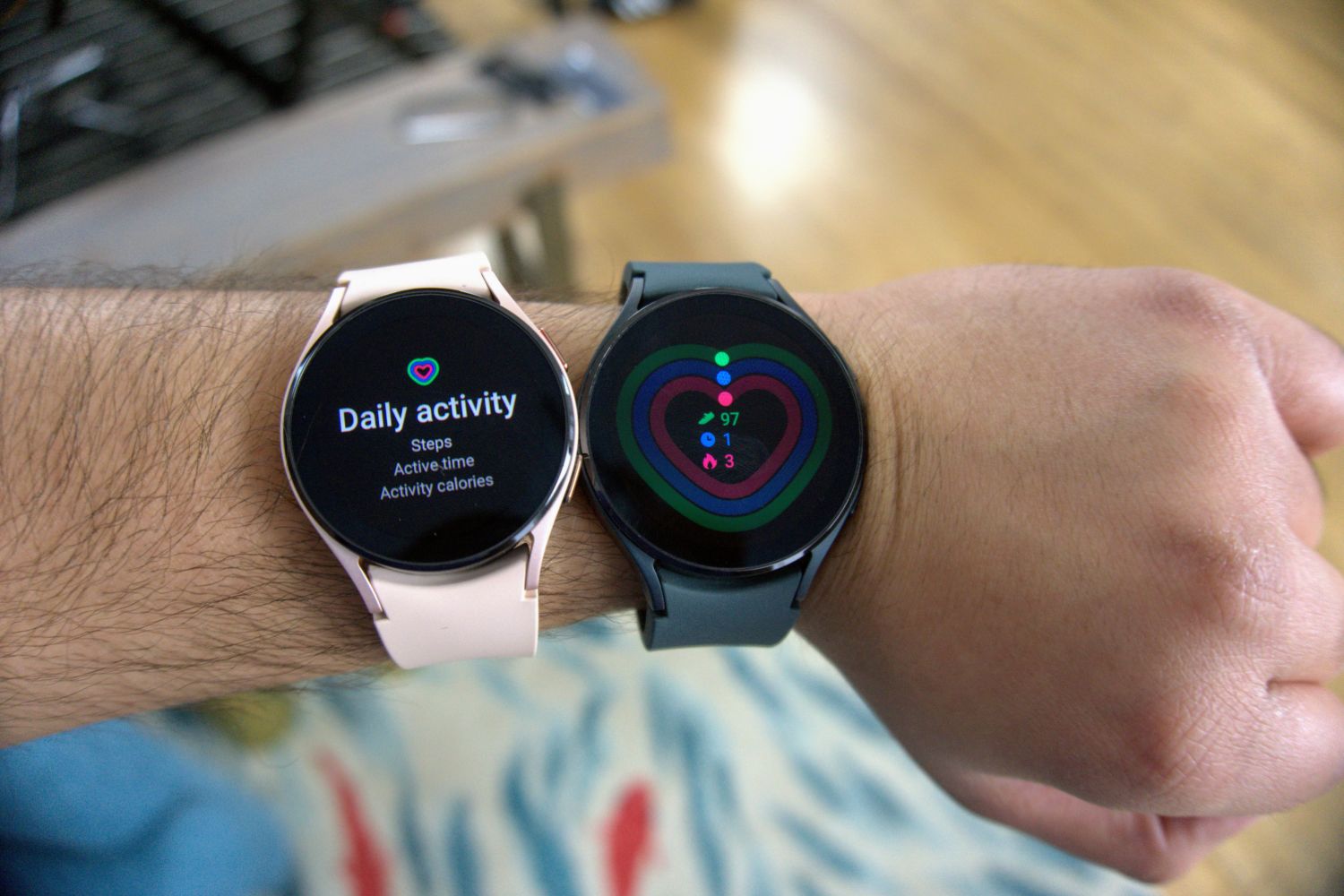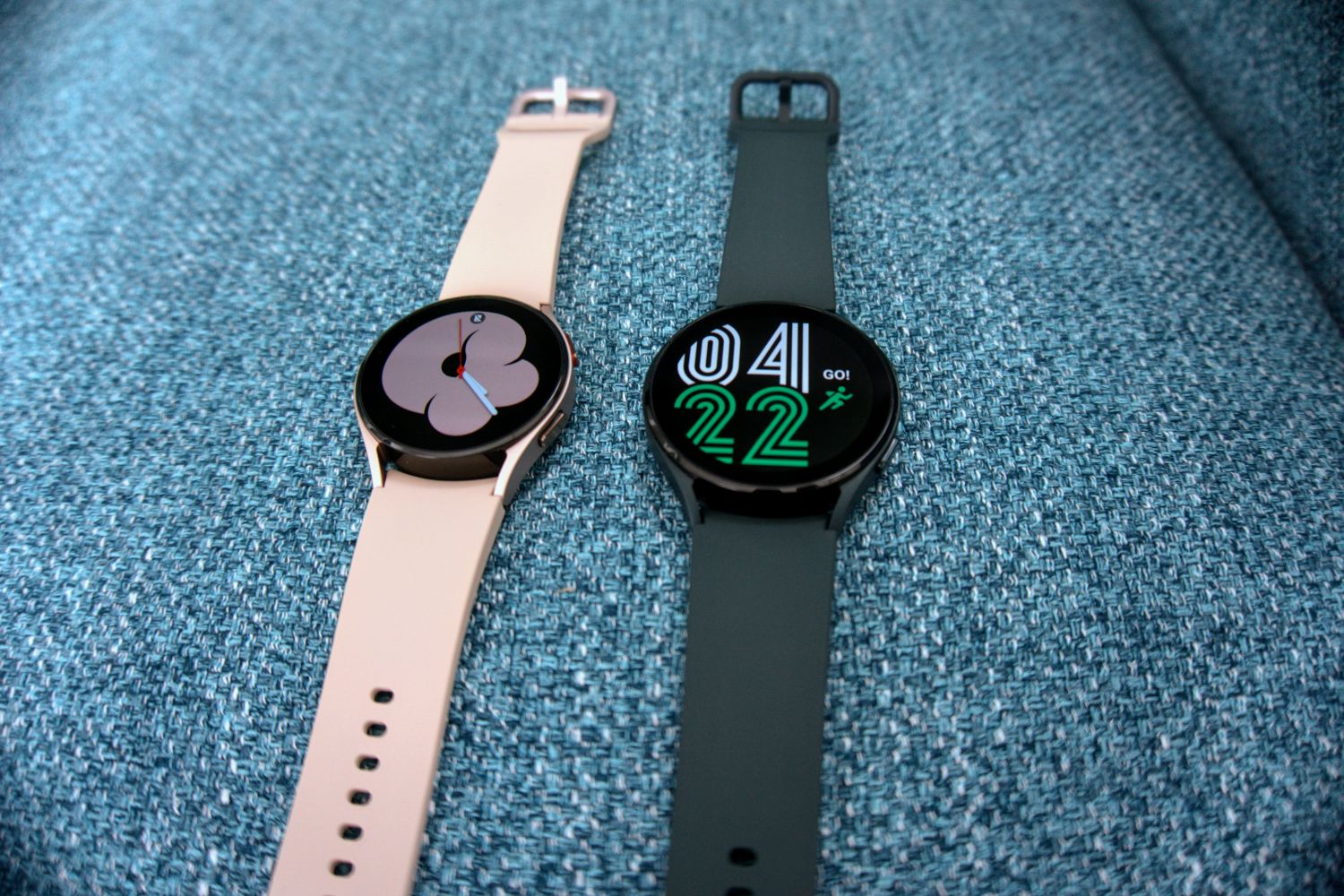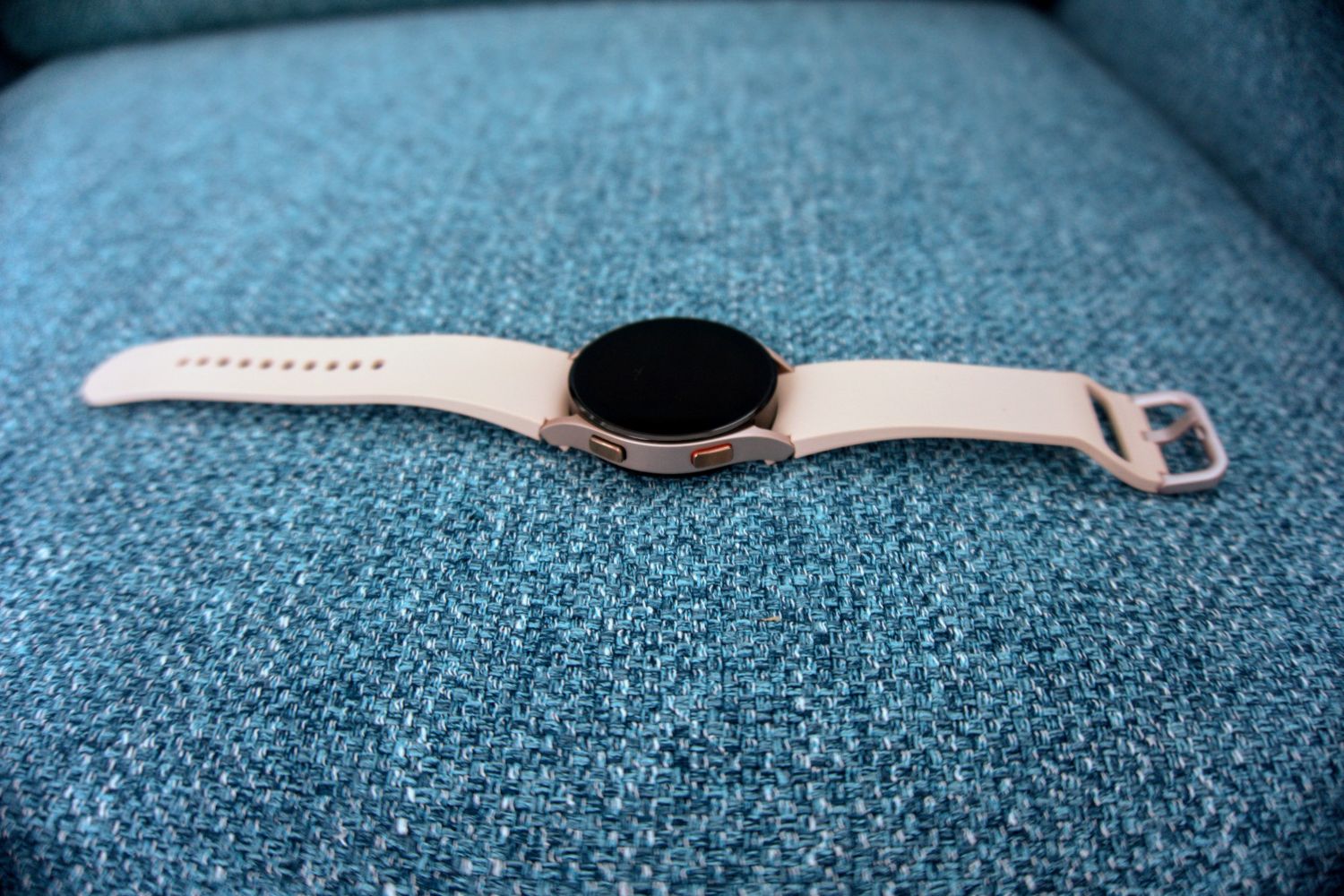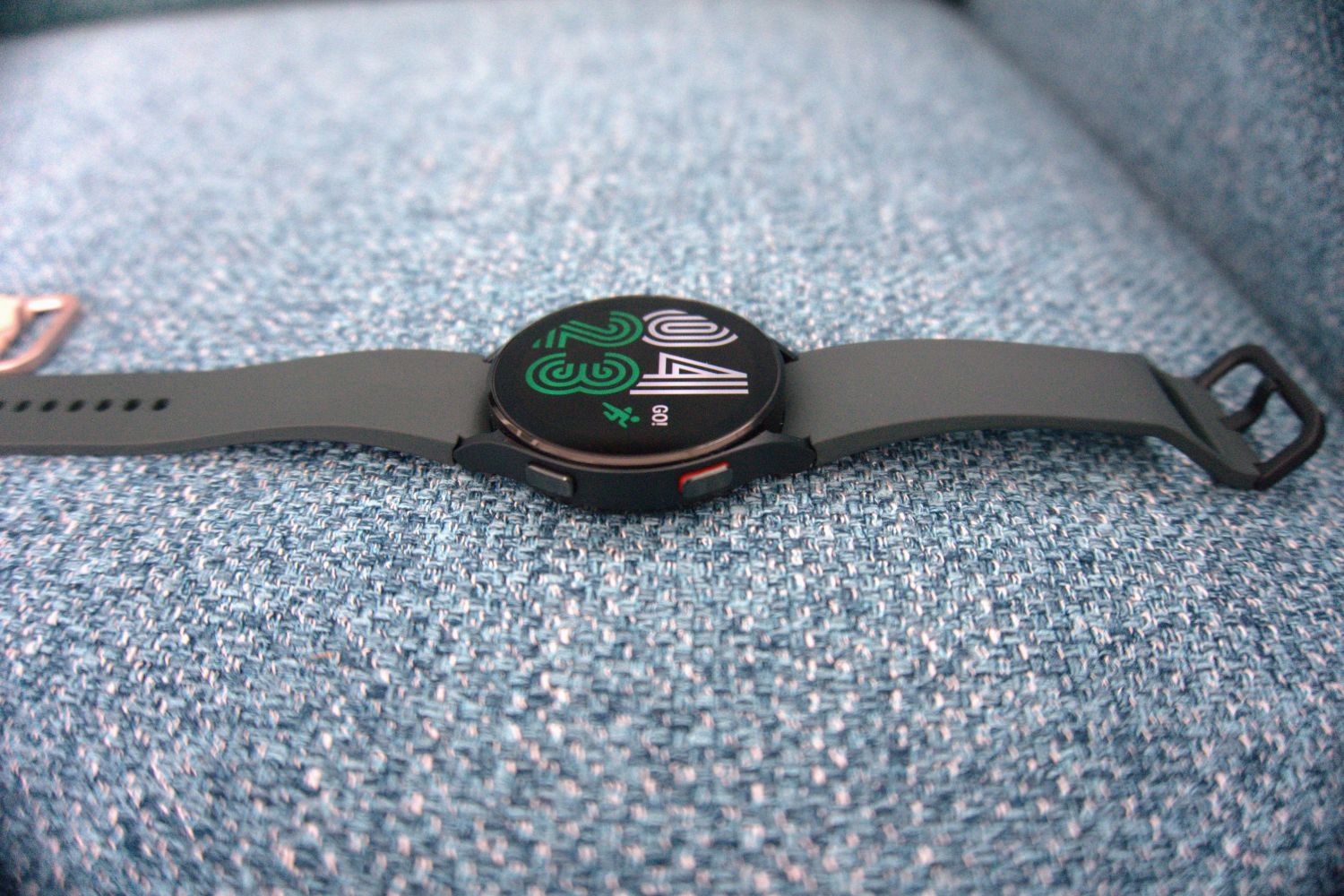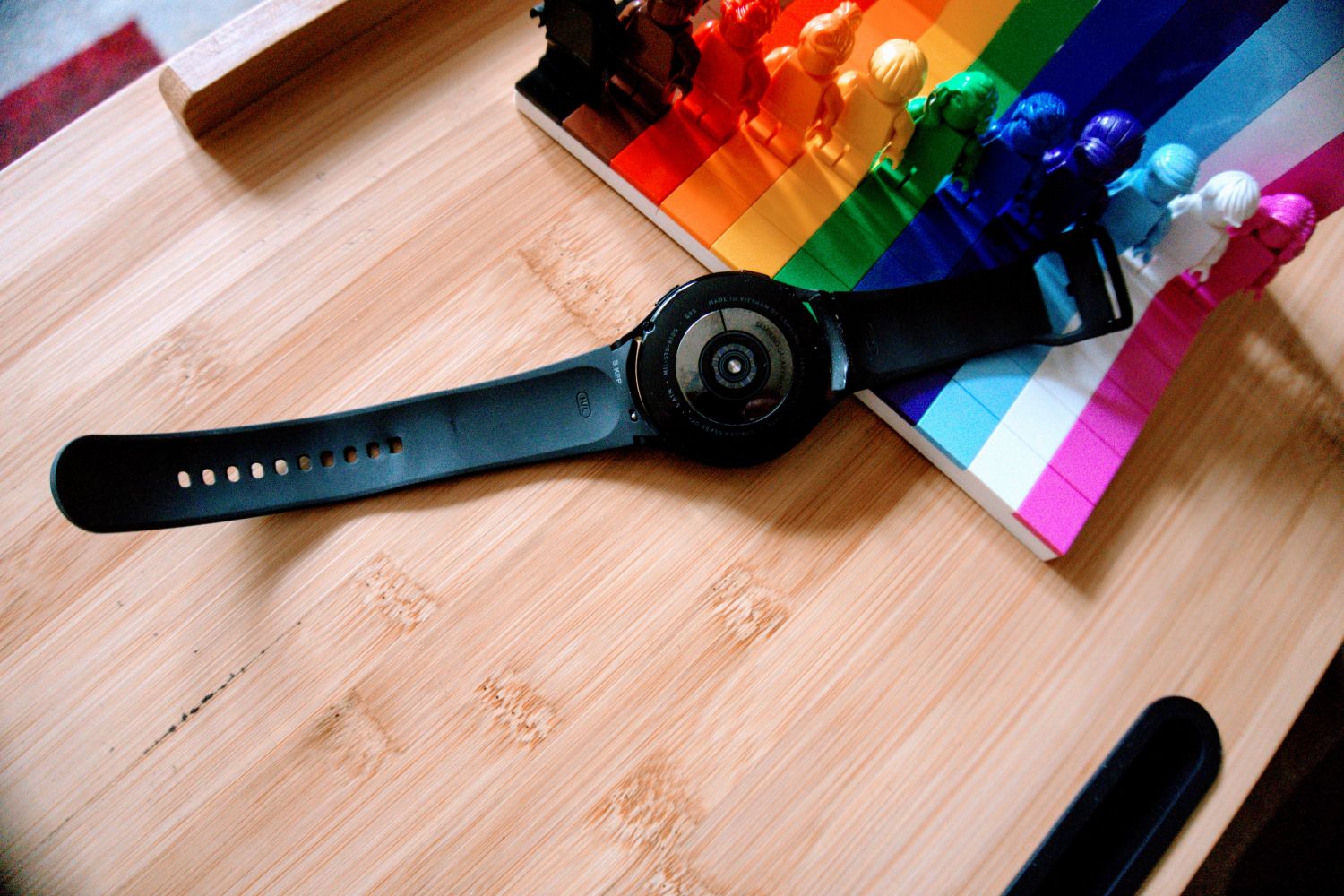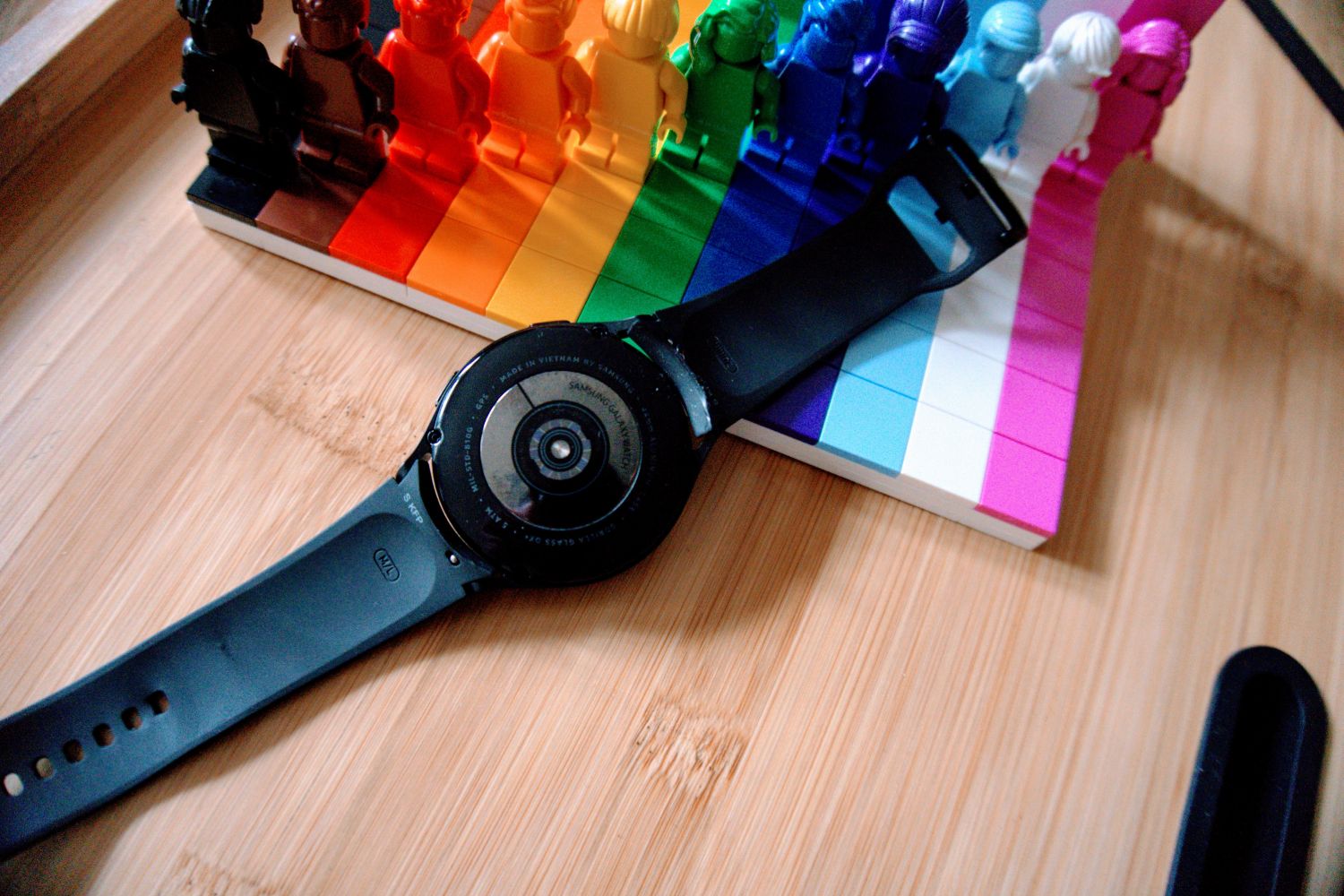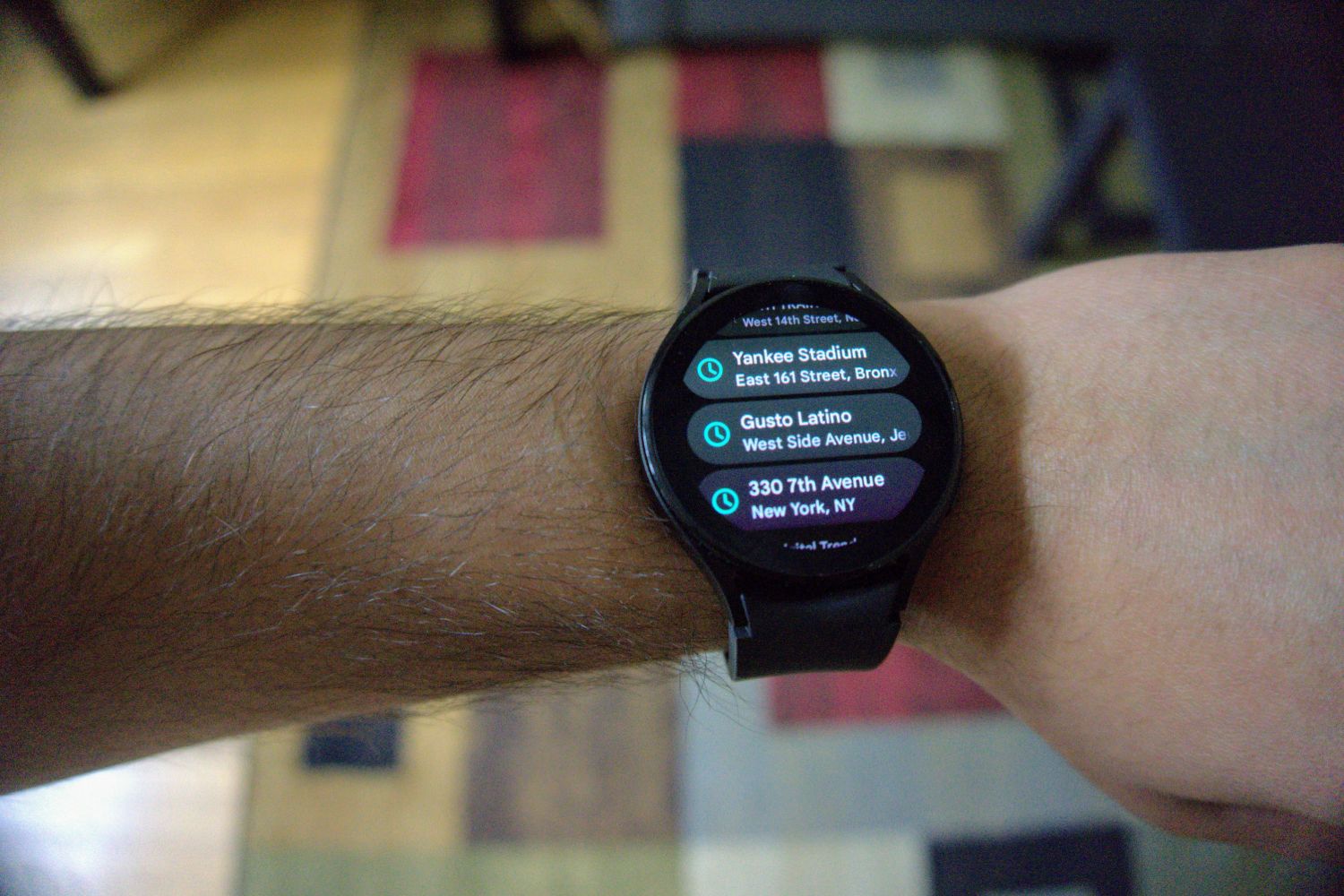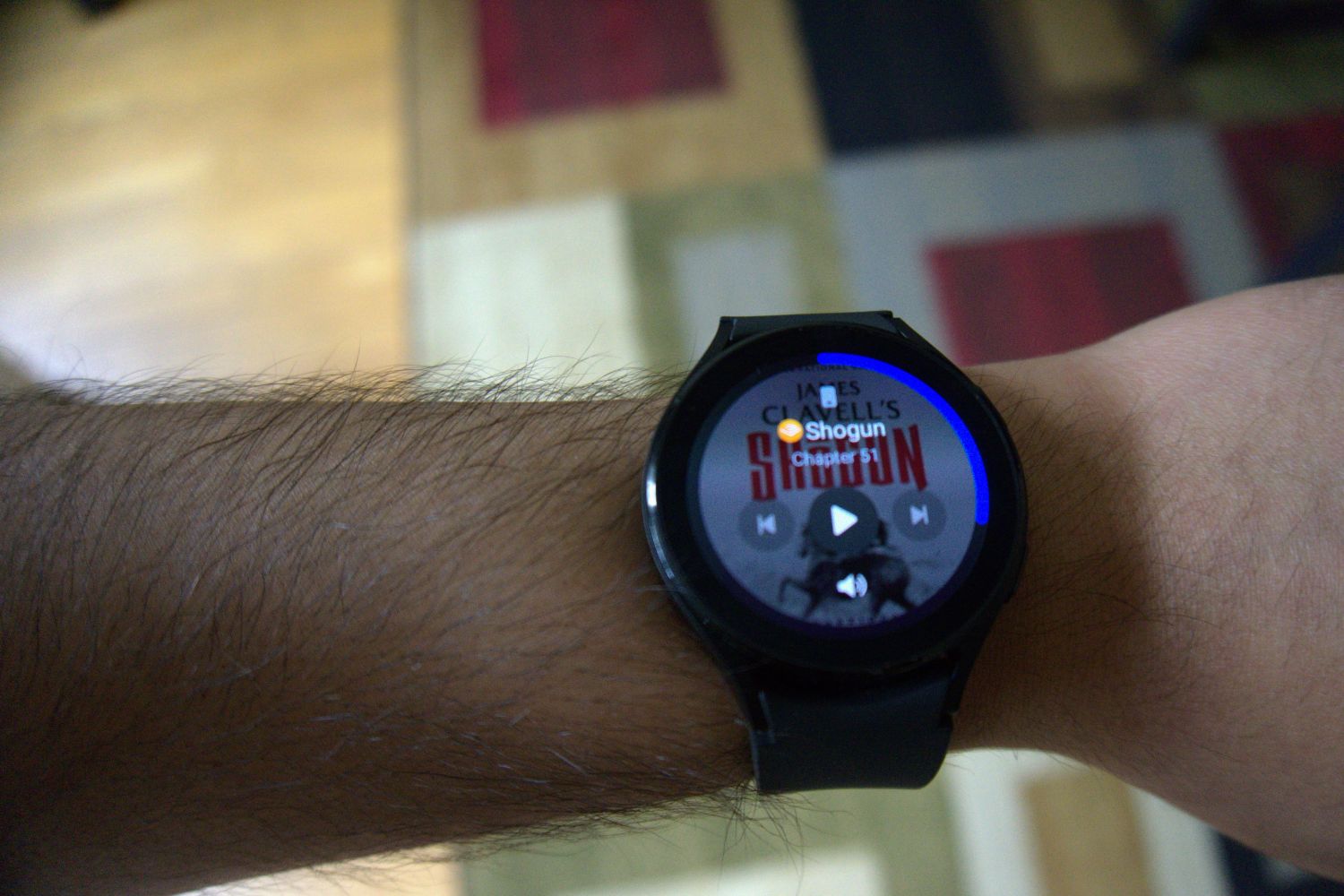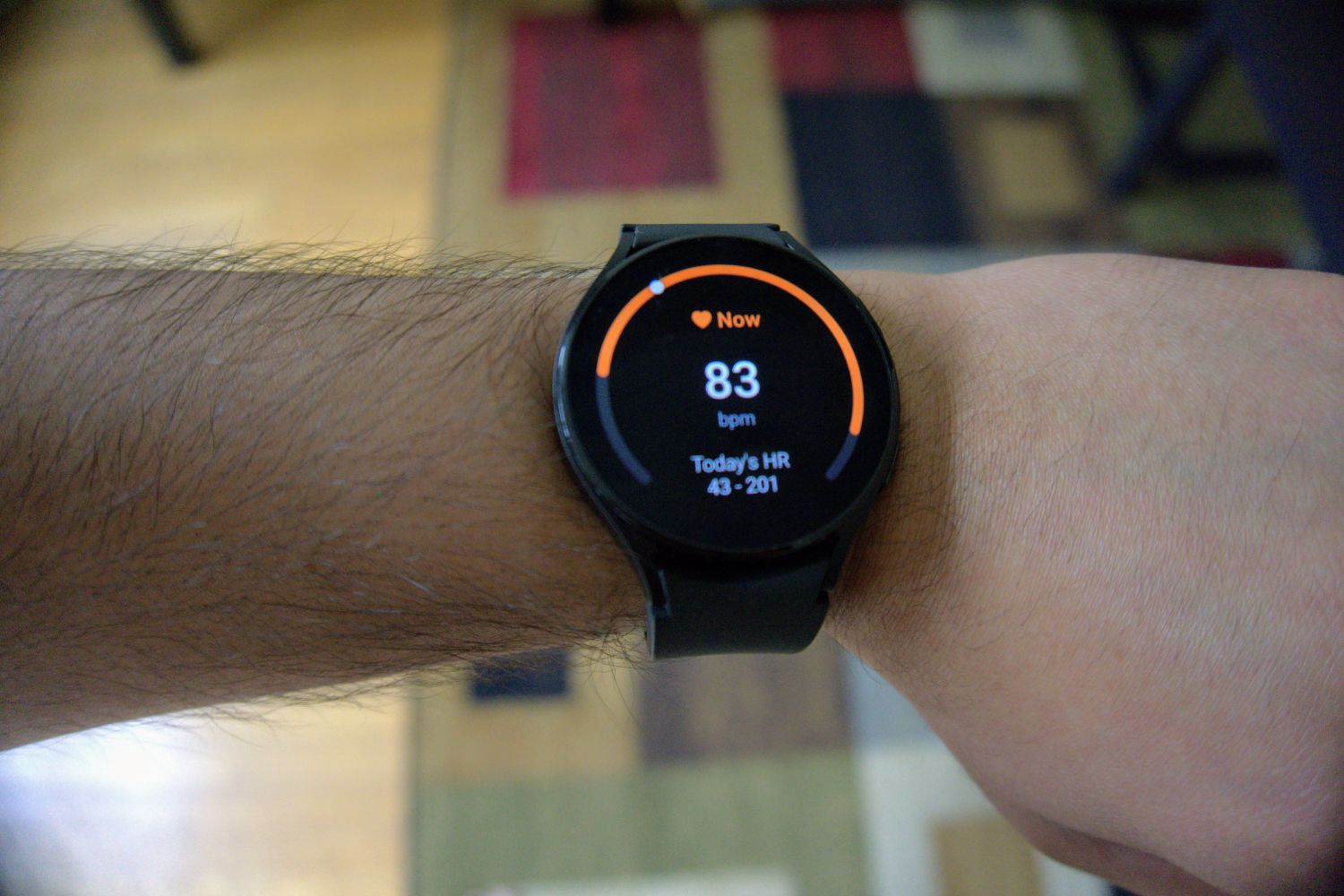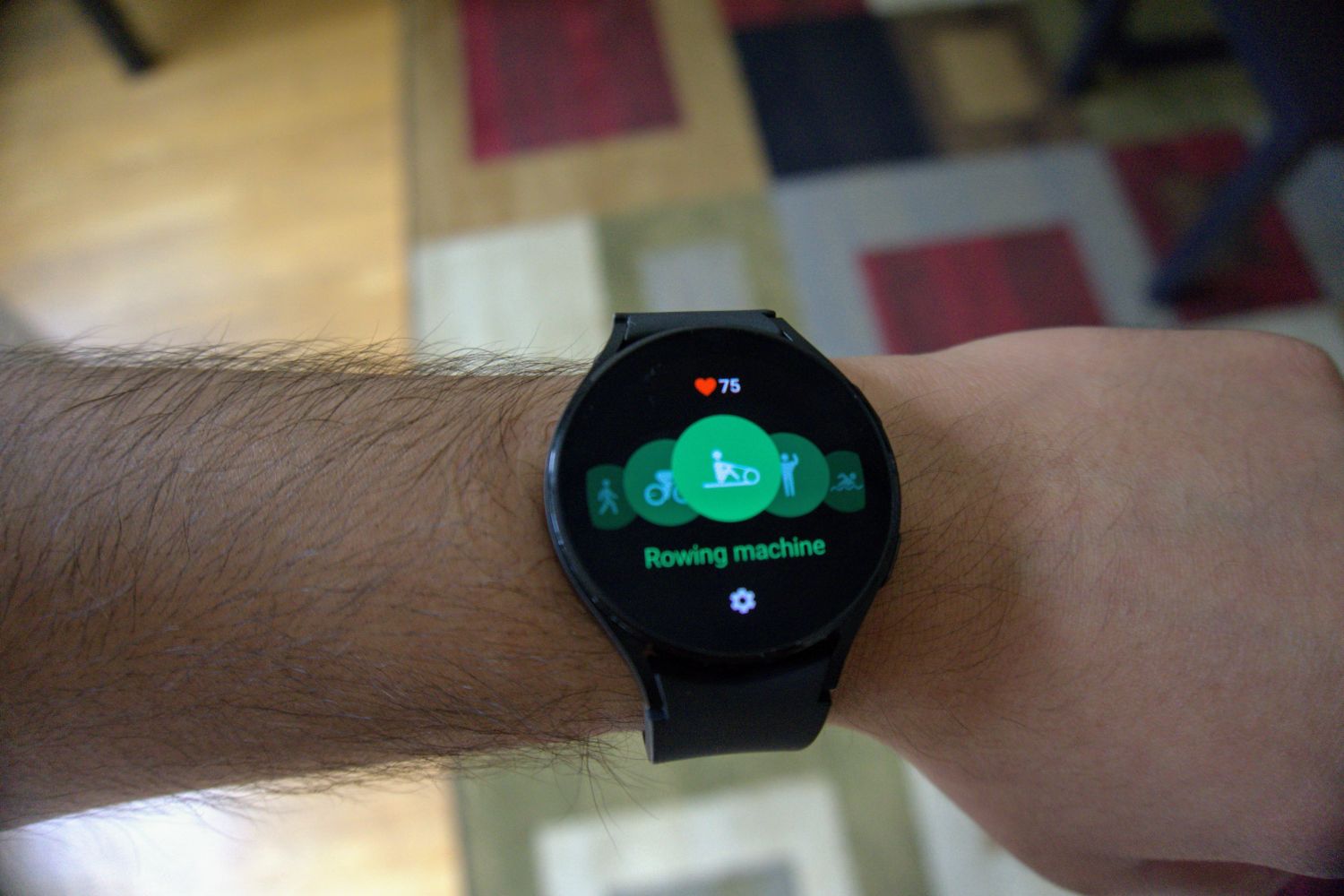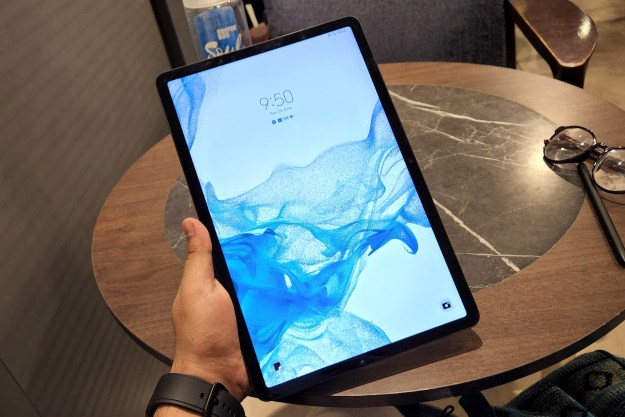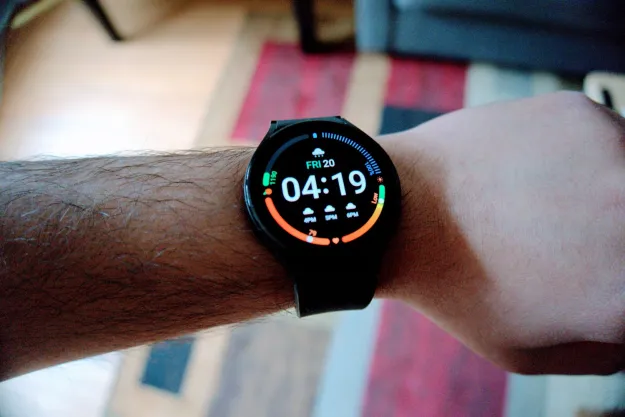
“The Galaxy Watch 4 has great health and fitness-tracking features in a comfortable build designed for smaller wrists.”
- Comfortable fit and size
- Excellent fitness and health-tracking features
- Seamless pairing with Samsung devices
- Two-day battery life
- Finicky digital bezel
- Automatic workout tracking can be inconsistent
The Samsung Galaxy Watch 4 is the svelte sibling to the chunkier Watch 4 Classic. With its smaller size and multiple color options, it largely offers the same Wear OS experience as the Classic, but there are some key differences. It has a digital bezel rather than the physical rotating one the Galaxy Watch series is known for. This shaves off some of the overall footprint at the cost of a certain degree of usability.
When it comes to features, though, you’re not missing out on anything. It runs Wear OS 3 and is loaded with health and fitness-tracking features like blood oxygen, heart rate, and BMI. You also get a complete set of Google Play store apps, including Spotify, YouTube Music,

Design and comfort
The Galaxy Watch 4 is much less of a behemoth on your wrist than the Watch 4 Classic, making it seem more like the spiritual (and physical) successor to the fitness-oriented Active series. It comes in two size options, 40mm and 44mm, and the screen sizes are pretty much identical to the Classic, with the smaller Watch 4 having a 1.2-inch screen and the 44mm having a 1.4-inch screen. There are several color options, including black, silver, green, and pink gold. My review unit was black.
I got the larger 44mm Watch 4 for review, even though my wrist is on the narrower side, to take advantage of the slightly larger screen size – and potentially – battery life. At 30.3 grams, it’s a good bit lighter than the 52-gram Watch 4 Classic, and it fit comfortably using the included silicone strap. Wearing it all day, working out, and sleep with it on were all perfectly comfortable. Because it’s IP68, you don’t have to worry about water or dust, so I never felt the need to take it off and often even forgot it was on my wrist.
The most notable change is that the Watch 4 has a digital bezel rather than a physical rotating one. The screen sits flush to the aluminum body, but there is a black bezel ringing it along with two lug buttons you can use to go back to the home screen or reopen a previously opened app.
If you want to scroll through apps or the various Tiles, you can run your finger along the bezel, and in theory, it should replicate the same effect as rotating the physical bezel, complete with haptics.
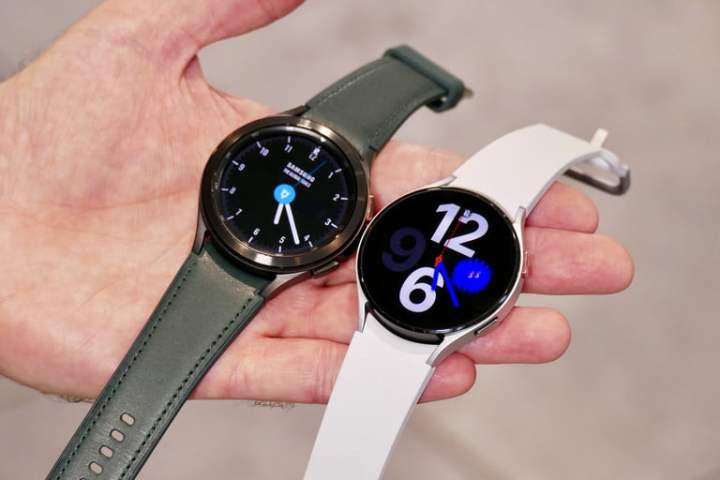
Unfortunately, in practice, it was never very precise. Maybe my fingers are simply too inelegant, but trying to scroll with the digital bezel was awkward and finicky at the best of times. All this lends more credence to my personal belief that physical buttons and controls are almost always superior to “fake” capacitive ones that try to replicate them with haptics. Most of the time, I just resorted to using the touchscreen.
On the plus side, the screen is crisp at 450×450, giving it 330 pixels per inch. The AMOLED panel looks great in all settings, and it’s bright enough for outdoor usability. I also wasn’t concerned about durability since the screen is protected by Gorilla Glass DX+, and it survived some accidental drops and bangs without a scratch.
Software
With the melding of Samsung Tizen and Google’s Wear OS platform into Wear OS 3, the Watch 4 is one of the best smartwatches I’ve used in terms of uniformity and usability. In many ways, Samsung’s Tizen dominates the interface with the various Tiles you can set up to view what you care about, tons of watch face options with as many or as few complications as you want, and solid and improving app support on the Google Play Store. Bixby is present if you want to use voice commands, but I never found much use for it. Initial pairing is easy, and it imports things like alarms and Do Not Disturb settings from your phone automatically.
Upon initial setup, however, getting notifications was finicky. I couldn’t always count on messages coming through from Teams, Slack, Signal, or Discord. After a software update, notifications became much more reliable, and I haven’t noticed any missing notifications lately.
The Watch 4 is one of the best smartwatches I’ve used in terms of uniformity and usability.
Apps like Spotify and
The one complaint I have is that everything isn’t found in the Galaxy Wearable App. You’ll need to use the app for initial watch setup, picking watch faces, controlling watch settings and the Quick panel, and finding the watch. But to get all the details of your fitness and health-tracking data requires the Samsung Health app, giving you access to sleep tracking, stress tracking, steps, heart rate, and more. Last, for just electrocardiogram (ECG) measurements, you’ll need to download and grant permissions to the Samsung Health Monitor app, which you can download from the Galaxy Store.
That brings you a grand total of three apps to get full usage out of the Watch 4, making me wonder why Samsung doesn’t integrate everything into Galaxy Wearable or Health. It’s a lot of unnecessary app clutter. There are also a few individual permissions that need to be granted to take advantage of certain features.
Health and fitness tracking
You won’t be disappointed with the comprehensive suite of health and fitness-tracking features packed into the Watch 4. In terms of what it can measure, it’s a closer rival to smart scales than other smartwatches on the market.
The big unique measurement here is Body Composition. The Watch 4 can measure an impressive set of stats, including Body Mass Index (BMI), Basal Metabolic Rate (BMR), weight, muscle, fat mass, and body fat. You measure by sliding the smartwatch further up your wrist, placing the elbow down on the table, and then pressing your fingers against the two lug buttons without touching your wrist. It’s an awkward gesture and not very comfortable to hold for the time needed for the results to process.
Once you get the results, there are many numbers, and as you can see in the screenshots below, it doesn’t really provide much in the way of breakdown or explanation of what it all actually means. You’ll have to do your own research to figure out if the stats provided by Body Composition are good or bad and to get some actionable advice. That would have been a nice feature to have in the Samsung Health app, and I’m surprised at the missed opportunity since other measurements like sleep and stress tracking do offer advice for improvement.
With sleep tracking, the Watch 4 neatly breaks down your sleep cycle in the Samsung Health app, giving you a sleep score, showing sleep stages like REM sleep, keeping track of blood oxygen, and recording snoring and even calories burned. It was an excellent way to evaluate the quality of my sleep, especially on those unfortunately frequent nights when I had insomnia.
Stress tracking doesn’t throw quite so many numbers at you, but simply plots your stress level on a chart and a color-coded bar. It’s difficult to tell how accurate it is. It often told me I wasn’t very stressed when I was burdened under a flood of work and told me I was very stressed while sitting down and watching Castlevania on Netflix. As much as I’m fond of Trevor Belmont and Alucard, I don’t think either of them was causing me much stress.
Other tracking features are fairly standard. You get step and workout tracking with a variety of exercises like running, walking, cycling, swimming, circuit training, rowing, weight machines, treadmills, and more. There’s both automatic and manual workout tracking, but the Watch 4 is pretty decent at picking up when you’re walking and running.
It had more issues picking up on when I was using my rowing machine, with me often being 10 minutes into my workout before picking up on the fact. The first several times, I had to start it manually before it eventually started to get what I was doing. It does have a bad habit of ending my session early, though, and I haven’t quite been able to figure out why.
With sleep tracking, the Watch 4 neatly breaks down your sleep cycle in the Samsung Health app.
There’s also a heart rate monitor and electrocardiogram (ECG) that let you track your vital signs. The ECG requires the separate download of the Samsung Health Monitor, bringing you up to three apps to get full usage out of the Watch 4.
The ECG measurement takes about 30 seconds to complete and requires you to rest your finger on one of the button lugs. The measurement isn’t meant for diagnosing heart attacks, but it will tell you if it thinks you have atrial fibrillation. In that regard, it’s useful enough, but not really something I would measure every day since the heart rate monitor keeps track of things automatically.
Performance and battery
The Watch 4 is powered by an Exynos W920 processor and has 1.5GB
Battery life is great, at least relative to the Galaxy Watch 4 Classic. I reliably squeezed out two days from the battery under average usage, which included working out on the rowing machine for 40 minutes, a walk in the park, sleep tracking, using Spotify, and general day-to-day monitoring. It took just under two hours to charge to full from 1%. Rather than topping up overnight, I usually just plugged in the Watch 4 when I was showering and never ran out of juice.
Price and availability
The Samsung Galaxy Watch 4 comes in at the following price points depending on the size and model:
- 40mm Bluetooth/Wi-Fi: $250
- 44mm Bluetooth/Wi-Fi: $280
- 40mm 4G LTE: $300
- 44mm 4G LTE: $330
Most models will start shipping in mid-September.
Our take
The Samsung Galaxy Watch 4 is packed with features and gives Android users plenty to like. With its slimmer design and more color options, it’s more fashion-forward than the bulky Watch 4 Classic, though that does result in some usability trade-offs. The health and fitness-tracking features are impressive, especially Body Composition, even though there’s room for improvements. Wear OS 3 is smooth and responsive, and the issues that cropped up upon initial use seem to be steadily getting resolved. If you’re in the market for a comfortable, feature-packed smartwatch, you won’t go wrong with the Galaxy Watch 4.
Is there a better alternative?
If you’re an iPhone user, the obvious choices are the Apple Watch Series 6 and Apple Watch SE. They integrate the best in the iOS ecosystem, they’re high-quality and packed with most or all of the same features as the Watch 4. While it’s possible to use
For
How long will it last?
The Galaxy Watch 4 has a standard one-year warranty. It’s IP68 dust and water-resistant and rated to 5ATM, meaning it can survive at a depth of 50 meters for 10 minutes. It’s also certified to MIL-STD-810G, which means it’s survived a set of lab tests for resistance to shock and vibration. The included Sport strap also seems to be made of good, high-quality silicone that didn’t get grungy after workouts. Lastly, Wear OS 3 is the most recent software out for smartwatches, and you’re sure to get more updates, so I expect it to last for at least two years, if not longer.
Should you buy it?
Yes. The Galaxy Watch 4 is the best Wear OS smartwatch for people with narrower wrists. It has the same great health and fitness-tracking features as the Watch 4 Classic, but has a lower starting price and two-day battery life. While the digital bezel isn’t nearly as precise a control as the physical dial, the slimmer and more comfortable design makes it a worthwhile trade-off.
Editors' Recommendations
- Best Apple Watch deals: Series 9 and Ultra 2 discounted
- Best Samsung Galaxy Z Flip 5 deals: Get the foldable for free
- Best Samsung Galaxy deals: S24, Buds, Watches and more
- Samsung Galaxy Watch 7: news, rumored price, release date, and more
- Does the Samsung Galaxy Watch 6 work with the iPhone?


